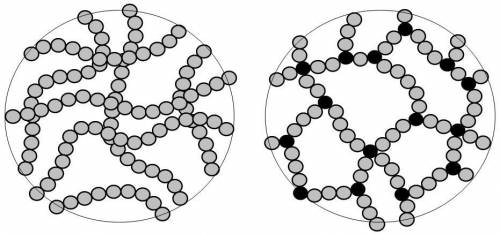 14
14 carbohydrates- store energy and provide support and help in mating the energy sorted in the body
lipids- surround and protect cells, regulate cell fucntions and the body and the organism.
 14
14 carbohydrates- store energy and provide support and help in mating the energy sorted in the body
lipids- surround and protect cells, regulate cell fucntions and the body and the organism.
 19
19 A: carbon, hydrogen, oxygen & nitrogen
B: carbon, hydrogen, oxygen, nitrogen; plus phosphorous
C: Monosaccharides
D: amino acids
E: nucleotide
Step-by-step explanation:
 7
7 A- Provide energy
B- Store energy
C- enable movment
D- starches
E- DNA
Explanation:
Your welcome finish your work now.
 11
11 Carbohydrates, or polysaccharides, contain carbon, hydrogen, and oxygen. Their monomer, or building block, is a monosaccharide/simple sugar.
Proteins contain carbon, hydrogen, oxygen, and nitrogen. Their monomer, or building block, is an amino acid. Remember, these amino acids are connected by peptide bonds to form proteins.
Nucleic acids contain carbon, hydrogen, oxygen, nitrogen, and phosphorus. Their monomer, or building block, is a nucleotide—formed of a pentose sugar, phosphate group, and a nitrogenous base (adenine, cytosine, guanine, and thymine).
 1
1 A macromolecule is a molecule that consists of several thousand atoms, which gives it a relatively high molecular mass.
The most common and multidimensional macromolecules in form and function are proteins that, despite their differences, are structured on the same raw material, a set of 20 different protein amino acids, linked in different sequences on a case-by-case basis, producing a variety of protein molecules of more than thousand.
Learn more in link

 19
19 A: carbon, hydrogen, oxygen & nitrogen
B: carbon, hydrogen, oxygen, nitrogen; plus phosphorous
C: Monosaccharides
D: amino acids
E: nucleotide
Step-by-step explanation:
 7
7 A- Provide energy
B- Store energy
C- enable movment
D- starches
E- DNA
Explanation:
Your welcome finish your work now.
 11
11 Carbohydrates, or polysaccharides, contain carbon, hydrogen, and oxygen. Their monomer, or building block, is a monosaccharide/simple sugar.
Proteins contain carbon, hydrogen, oxygen, and nitrogen. Their monomer, or building block, is an amino acid. Remember, these amino acids are connected by peptide bonds to form proteins.
Nucleic acids contain carbon, hydrogen, oxygen, nitrogen, and phosphorus. Their monomer, or building block, is a nucleotide—formed of a pentose sugar, phosphate group, and a nitrogenous base (adenine, cytosine, guanine, and thymine).
 34
34 A- Carbon, hydrogen, oxygen, nitrogen
B- carbon, hydrogen, oxygen, nitrogen, phosphorus
C- sugar
D- amino acid
E-nucleotide
Explanation: just did it.

It will provide an instant answer!
